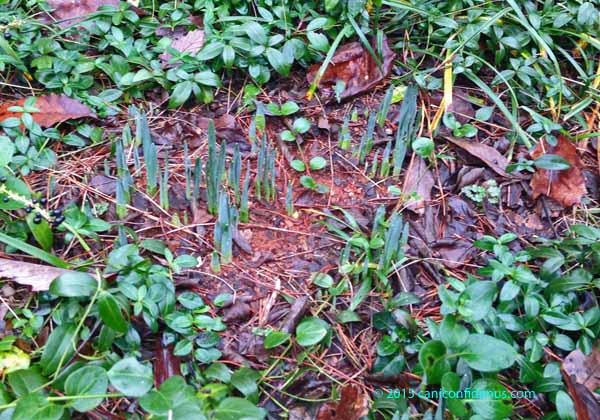but it won’t stay.
If you have been watching the news, or if you live in the East and have gone outside, you’re already aware of how warm this December has been. My brother visited us Sunday and pointed out that our daffodils are starting to grow, at the time that most gardeners recommend planting bulbs.

It’s no surprise. Our nightly low temperatures have been higher than the normal highs for days this month.
My brother said that forsythias, which are also spring bloomers, are blooming now in Chattanooga, where he lives. I heard a radio story last week that had reports from a lot of places around the country of blooming plants and even new baby birds.
Unfortunately, the lows here are expected to be below freezing later this week. Neither the early plant growth nor the early birds are likely to survive through the winter, and winter will come, even if it’s late.
I have not seen much about a connection between this warm weather and global warming. Most meteorologists or weather people have talked about a strong El Niño. That usually is associated with wetter weather and cooler than normal winter temperatures here in Georgia. We are getting wet weather, but not cooler temperatures.
Climatologists almost always warn against associating a specific weather event with global warming (or climate change as it has become known, mainly because of conservative opposition to science). However, there are certain mathematical and statistical properties that measurements of many physical quantities follow. Such measurements include things like the height of 20-year-old males or the weight of full-term babies at one year. They also apply to things like measurements of high temperatures on a given day of the year at a given location. Such measurements almost always have what is called a normal distribution. In a normal distribution, measurements tend to group around the average, and have fewer measurements either higher or lower than average. A normal distribution will also have the same number of measurements below and above the average.
Accurate, reliable temperature measurements have been made for a limited time in most locations, so the number of measurements on any given day of the year will be fairly small, probably under 200. As a result, new record lows and highs will be recorded occasionally, although probably decreasing over time as more and more data accumulate. Since temperatures almost certainly follow a normal distribution, there should be a roughly equal number of new record lows and highs over a reasonably long period. If you start seeing more record highs than record lows, it probably means that something is changing. That’s what we have been seeing that in recent years.
Global warming won’t mean that we don’t have cold winters, and it won’t mean that we don’t have new record low temperatures. But it will mean that we will see events like the warm December of 2015 more and more often in the future.